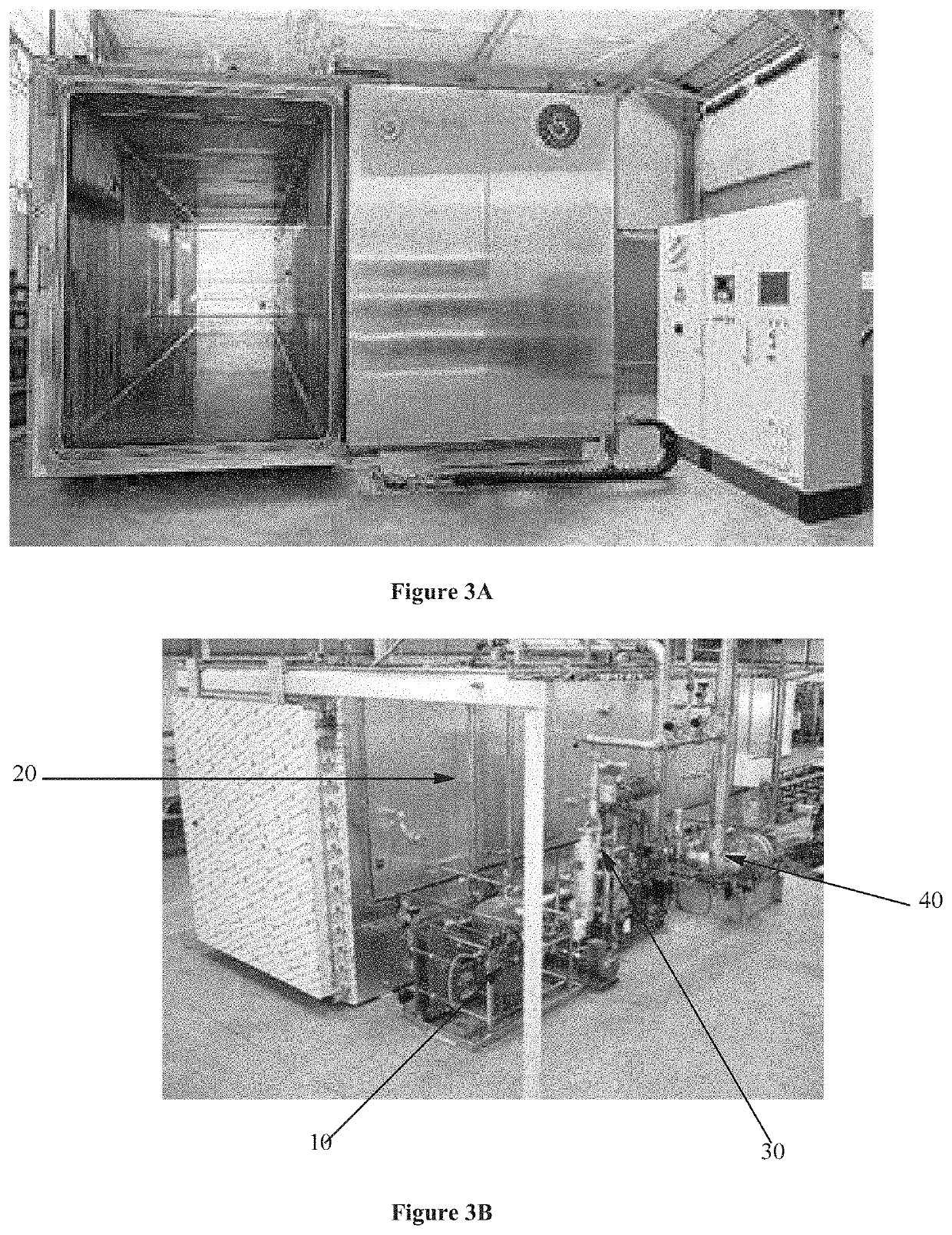Disinfection and/or sterilization of agricultural crops
a technology for agricultural crops and sterilization, applied in the directions of packaging sterilisation, biocide, transportation and packaging, etc., to achieve the effect of low cost, low training cost and simple learning
- Summary
- Abstract
- Description
- Claims
- Application Information
AI Technical Summary
Benefits of technology
Problems solved by technology
Method used
Image
Examples
example 1
ative Sterilization Protocol Using Andersen Products EOGas 4 Sterilizer
[0149]Andersen Products (Haw River, N.C.) sells a commercial sterilizer, which can be used to decontaminate agricultural products at a modest scale, i.e., up to around 5 pounds per batch. While particular aspects of this commercial sterilizer are described, certain parameters can also be applied to other ethylene oxide sterilization devices as well.
[0150]The active ingredient is ethylene oxide (EO). EO is a powerful anti-microbial agent; it can also be dangerous if not handled correctly.
[0151]The sterilizer can be operated at different sterilization cycles, longer at lower temperatures, and shorter at temperatures up to around 30° C. (86° F.). EO gas requires more time to properly sterilize when operating at lower temperatures.
[0152]The EOGas 4 sterilizer can be run at room temperature sterilization cycles at around 30° C. for a 12 hour cycle and a 24 hour cycle. When these relatively low temperatures are used, t...
example 2
on of Andersen Anprolene Room Temperature Decontamination Process
[0249]Liquid ethylene oxide (EO) converts to gas at 10.4° C. In its gaseous state it becomes an effective decontaminant around 15-20° C. This physical property of EO is the basis for the Andersen Anprolene system, a process that has been used for medical device sterilization since the 1960's. The original Anprolene system (provided by Andersen Products, Haw River, N.C.) has been recognized by the US Food and Drug Administration as a “pre-amendment device”, and the latest version of the system received FDA clearance in 2015. Anprolene (EO) gas ampoules have been registered with US EPA since 1971.
[0250]Process Description
[0251]The Anprolene system works using a plastic sterilization bag which is filled with the items to be sterilized. A glass ampoule of EO, which is packaged in a sealed polyethylene Gas Release Bag, is added to the sterilization bag with appropriate sterility indicators (biological indicators and / or chem...
example 3
zed Sterilization Equipment
[0266]Summary of Results Preliminary Testing of Microbial Decontamination Barrel
[0267]Introduction:
[0268]In cases of hazardous microbial contamination of agricultural products in amounts too large to disinfect in the sterilization bags discussed elsewhere herein, a larger sterilization device can be used. This example establishes that material can be disinfected / sterilized in a standard 55-gallon drum with very low concentrations of ethylene oxide (<100 mg / L) at room temperature (around 20° C.).
[0269]Background
[0270]It has long been established that items can be effectively sterilized with ethylene oxide (EO) in a variety of improvised containers. In the 1960's H. W. Andersen, MD, patented and sold an EO sterilization system that operated at ambient temperature and with no external power source. This system employed polyethylene sterilization bags and unit dose ampoules of EO.
[0271]Theory
[0272]It is recognized that there is a negative linear relationship b...
PUM
 Login to View More
Login to View More Abstract
Description
Claims
Application Information
 Login to View More
Login to View More - R&D
- Intellectual Property
- Life Sciences
- Materials
- Tech Scout
- Unparalleled Data Quality
- Higher Quality Content
- 60% Fewer Hallucinations
Browse by: Latest US Patents, China's latest patents, Technical Efficacy Thesaurus, Application Domain, Technology Topic, Popular Technical Reports.
© 2025 PatSnap. All rights reserved.Legal|Privacy policy|Modern Slavery Act Transparency Statement|Sitemap|About US| Contact US: help@patsnap.com



